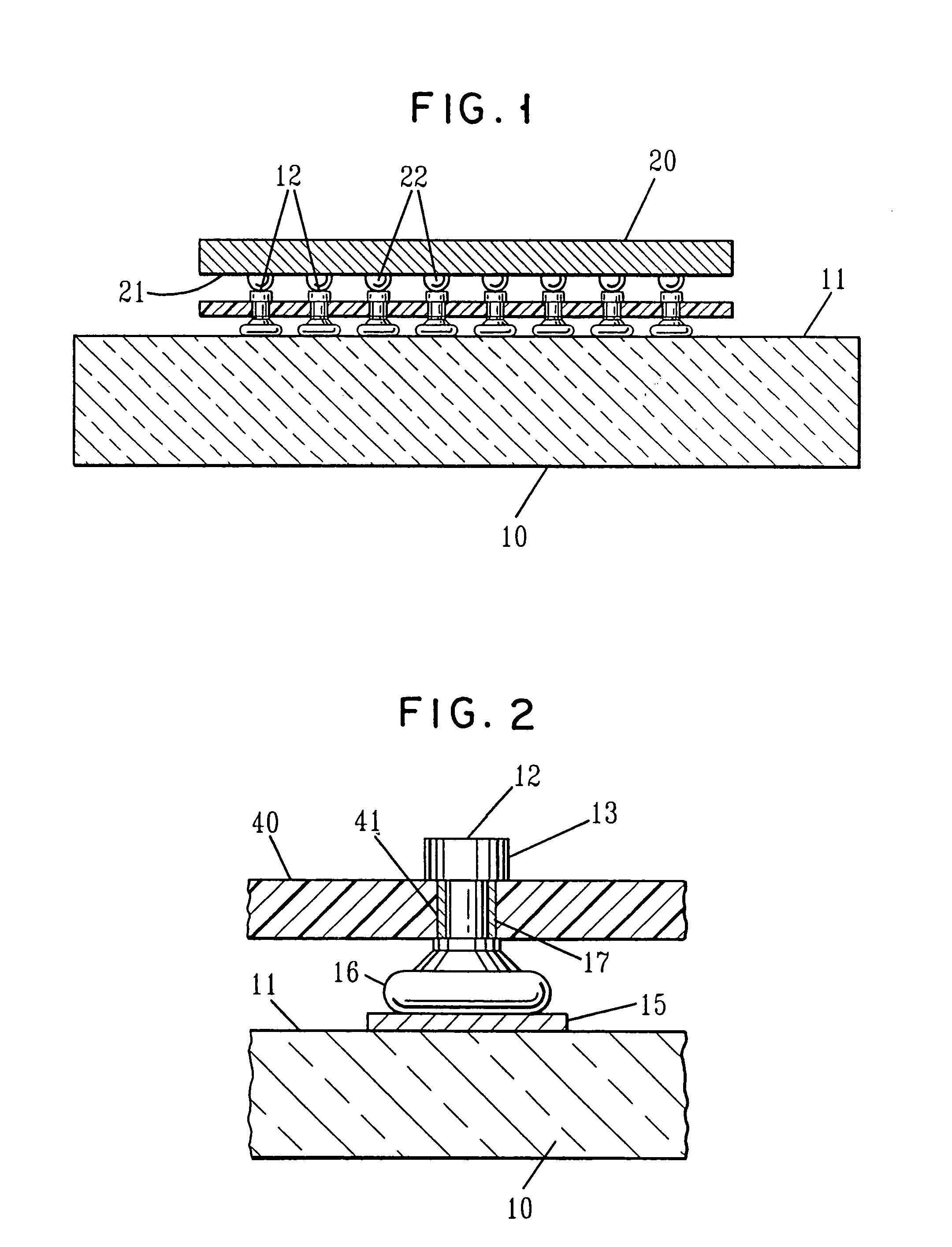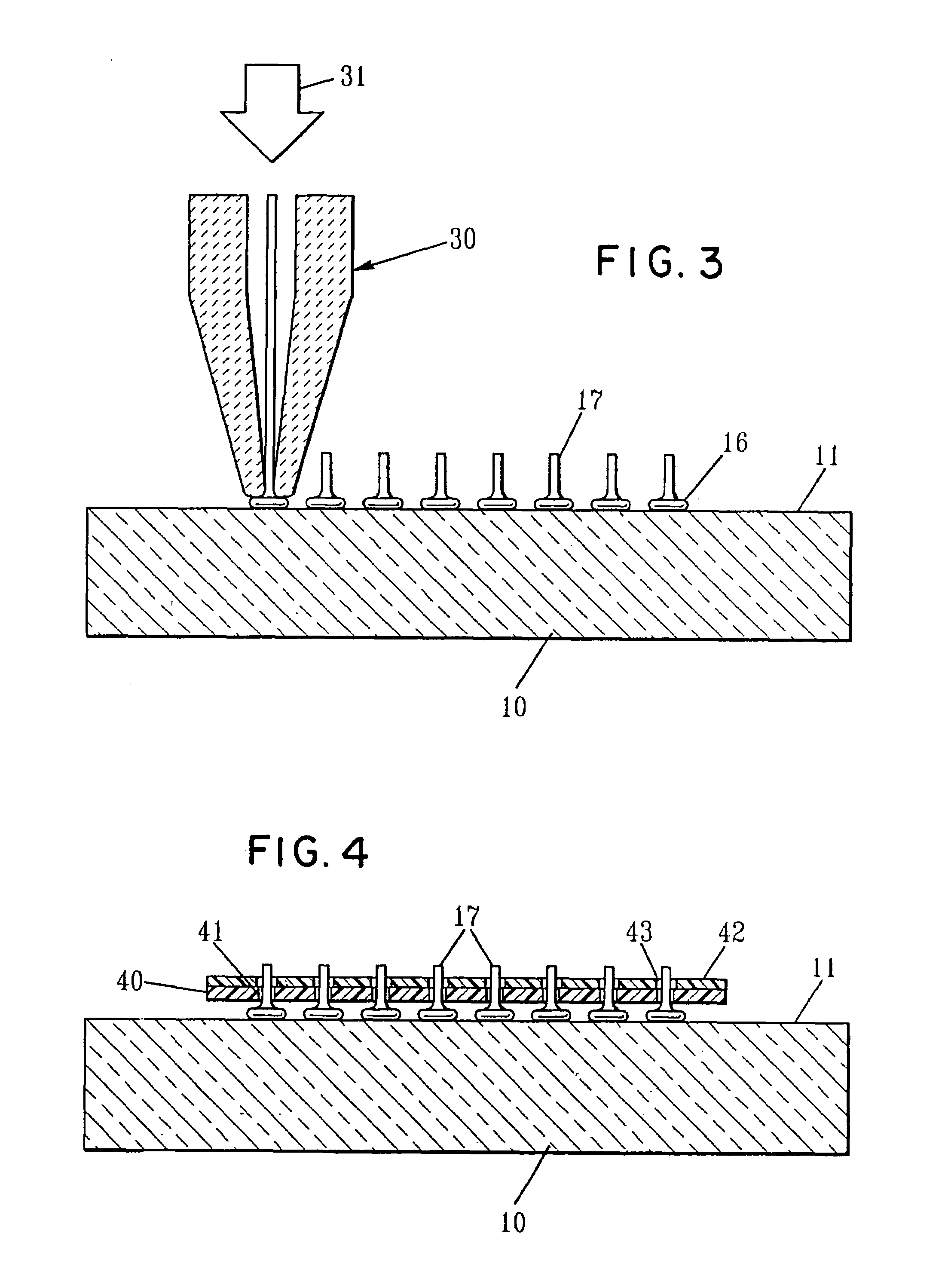High density integral test probe
a test probe and high density technology, applied in the field of probe structures, can solve the problems of easy damage to the probe wire, easy deformation or damage of the probe wire, and high cost of fabricating modern probes for testing integrated circuits, so as to facilitate the alignment of the probe array and minimize the contact resistance of the probe interface.
- Summary
- Abstract
- Description
- Claims
- Application Information
AI Technical Summary
Benefits of technology
Problems solved by technology
Method used
Image
Examples
Embodiment Construction
[0027]FIG. 1 shows a cross section of a test substrate (10) and high density integral rigid test probe (12) according to the present invention. The test substrate (10) provides a rigid base for attachment of the probe structures (12) and fan out wiring from the high density array of probe contacts to a larger grid of pins or other interconnection means to the equipment used to electrically test the integrated circuit device. The fan out substrate can be made from various materials and constructions including single and multi-layer ceramic with thick or thin film wiring, silicon wafer with thin film wiring, or epoxy glass laminate construction with high density copper wiring. The integral rigid test probes (12) are attached to the first surface (11) of the substrate (10). The probes are used to contact the solder balls (22) on the integrated circuit device (20). The solder balls (22) are attached to the first surface (21) of the integrated circuit device (20).
[0028]FIG. 2 shows an en...
PUM
 Login to View More
Login to View More Abstract
Description
Claims
Application Information
 Login to View More
Login to View More - R&D
- Intellectual Property
- Life Sciences
- Materials
- Tech Scout
- Unparalleled Data Quality
- Higher Quality Content
- 60% Fewer Hallucinations
Browse by: Latest US Patents, China's latest patents, Technical Efficacy Thesaurus, Application Domain, Technology Topic, Popular Technical Reports.
© 2025 PatSnap. All rights reserved.Legal|Privacy policy|Modern Slavery Act Transparency Statement|Sitemap|About US| Contact US: help@patsnap.com



